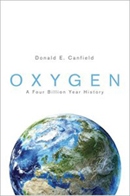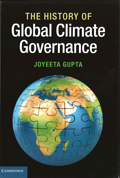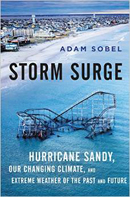Today’s Google hangout on “Women in Weather,” cohosted by AMS and the American Astronautical Society and presented by Northrop Grumman, featured an insightful and wide-ranging discussion about what it means to be a woman in the atmospheric sciences. But the conversation wasn’t just among the panelists–it was also active on Twitter. If you missed the live broadcast of the hangout, you can watch it below, and check out the sampling of tweets underneath the video.
Google Hangout starting now about role of women in weather. We need more of this. http://t.co/unYaV5W8z9 #ExtremeWx @ametsoc
— Bill Gail (@wbgail) March 25, 2015
Love all the girl power! Great group!! #ExtremeWx #LikeAGirl
— Samantha Davies (@SDaviesNBC5) March 25, 2015
.@NWS's Courtney Draggon: We need more social scientists to help build a Weather-Ready Nation http://t.co/DZ0hkl0ySJ #ExtremeWx #LikeAGirl
— NWS (@NWS) March 25, 2015
As if I didn't have enough of an issue figuring out what I want to do when I graduate, they drop "social scientist" #likeagirl #ExtremeWx
— Rochelle Ball (@DenverRochelle) March 25, 2015
Wow wish I could have gone storm chasing as part of my degree like @Ginger_Zee – learning from a book isn't everything #ExtremeWx
— Sally Webb (@WeatherWebb) March 25, 2015
@Ginger_Zee always re-inspires me in pursuing this very challenging second degree. #gonnagetthatseal #extremewx #meteorologistinthemaking
— Star Derry (@StarDerryWX) March 25, 2015
.@NWS's Robyn Heffernan: For IMETs observations are everything; remote sensing is very valuable http://t.co/DZ0hkl0ySJ #ExtremeWx #LikeAGirl
— NWS (@NWS) March 25, 2015
Robyn H – female IMETs are up to 14% in the field compared to 7% not long ago. Let's encourage more female IMETs #LikeAGirl #ExtremeWx
— Christine Shifa (@steneriley) March 25, 2015
Love our IMETS! At one point, that was my career goal. Now I get the best of fire wx and outreach/education! #Extremewx #likeagirl
— Tanja Fransen (@mtwxgirl) March 25, 2015
A. @NWS Wx is affected by global system so cooperating internationally is fundamental to NWS's mission. It's a two-way street. #ExtremeWx
— AMS (@ametsoc) March 25, 2015
.@twcMariaLaRosa – As a broadcast meteorologist, have to constantly be aware of our messaging on social, make sure clear/concise #ExtremeWX
— The Weather Channel (@weatherchannel) March 25, 2015
It's always interesting to hear from Mets outside of the tv business – there's so much more to meteo but all are important. #ExtremeWx
— Rachael Peart (@RachaelJPeart) March 25, 2015
'Female meteorologists on TV are not treated as scientists; they are treated like dolls' #WomenInWeather #ExtremeWx
— Amanda Lindquist (@AmandaKMOT) March 25, 2015
@Ginger_Zee : "The misunderstanding of what a meteorologist is is our #1 problem." PREACH. #ExtremeWx
— Courtney Obergfell (@ceober4) March 25, 2015
A. @RebeccaMillerWX Women on tv treated much differently than men, makes it hard to get the message to the public. #ExtremeWx
— AMS (@ametsoc) March 25, 2015
Seeing successful women in the field I would love to be a part of is inspiring, so thank you. This means a lot to me. #ExtremeWx #LikeAGirl
— Jennifer Naillon (@jsnaillon) March 25, 2015
A. @Ginger_Zee Huge goal is get rid of "weather-girl" term. #ExtremeWx #LikeAGirl
— AMS (@ametsoc) March 25, 2015
Advice: "don't be afraid to ask for help" … "and once you get that job help others coming behind you" #ExtremeWx #LikeAGirl
— Rosimar Rios-Berrios (@RosimarWx) March 25, 2015
.@NWS's Robyn Heffernan: Don't be intimidated by math and science. You can do it! http://t.co/DZ0hkl0ySJ #ExtremeWx #LikeAGirl
— NWS (@NWS) March 25, 2015
#ExtremeWx and #LikeAGirl hashtags now trending on @twitter! 🙂
— Rosimar Rios-Berrios (@RosimarWx) March 25, 2015
Yes. This. RT @ametsoc: A. @NWS Don't worry what people think, do you you want to do and have a passion for. #ExtremeWx #LikeAGirl
— morganabigail (@morganabigail) March 25, 2015
Seriously. What an inspirational hangout! My dreams got so much bigger over the last hour. #LikeAGirl #ExtremeWx
— Rochelle Ball (@DenverRochelle) March 25, 2015


